













The magazine of the art-form of the photo-essay
“A free, really high quality photo-essay magazine. Fabulous!”
Stephen Fry. British actor, writer and film & documentary maker

June 2014 back issue

by Jack Fillery


An Inflection of India presents a series from my recent travels on the Indian subcontinent, documenting my reaction
to contrasts of cultural existence and the sense of belonging I encountered there.
The images, shot in a limited colour palette, are intended to offer an alternative perspective to typical artistic
expectations of India, which I believe often present a rose-tinted view of the country. An Inflection of India, by contrast,
aims to offer a more honest and uncompromising opinion of a nation that I feel is characterised by polar forces of
disorder and unity in equal measure.
I wanted to offer a new perspective; a fresh insight into the lifestyles and relationships of the inhabitants of the country
with their natural and built environment, both of which are threatened by forces of globalisation and rapid development,
and on the challenges facing contemporary India, as its varied and long-standing customs struggle to maintain their
existence when set against the backdrop of a rapid cultural transition. For a nation that is often seen as a bastion of
tradition, its conflict with modernity presents a fascinating artistic subject.
Despite the chaos and its infinite cultures and personalities, everything in India feels like it belongs where it is
– nothing, nor nobody seems out of place or irregular. But the balance of this harmony is in doubt, as the country
struggles with its ever-evolving sense of identity and faces new challenges as it emerges as one of the world’s
economic powerhouses.
India is at the same time both embracing and resisting the encroachment of a global culture. As a photographer, it is at
once a strangely sad and exhilarating experience to find yourself witnessing a society and a people whose traditions
and lifestyle are being lost.
I felt the need - almost a responsibility - to capture the beauty of the ordinary and the everyday, to document the
simplicity of existence in a land so steeped in romance and mythology and cultural difference.
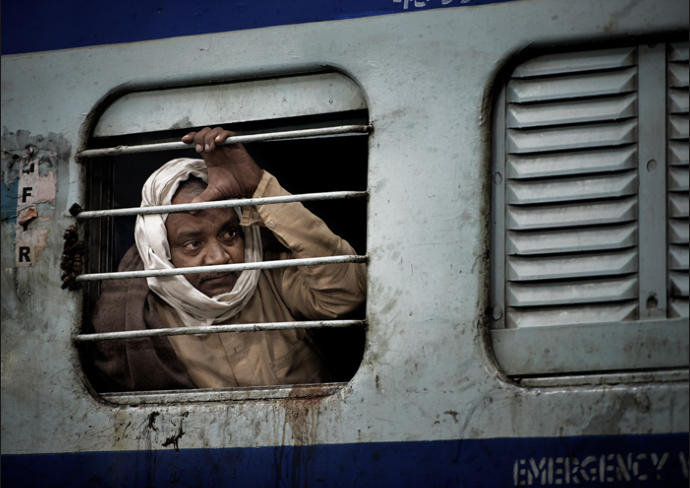
Roughly 8.9 million people travel annually on trains in India. As the country continues in its industrial revolution more
and more people migrate to the cities in search for work. This often means families can be separated for years at a
time as one or more member has to travel sometimes hundreds of miles to the nearest city.
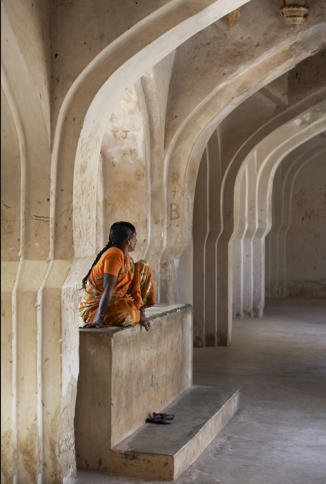
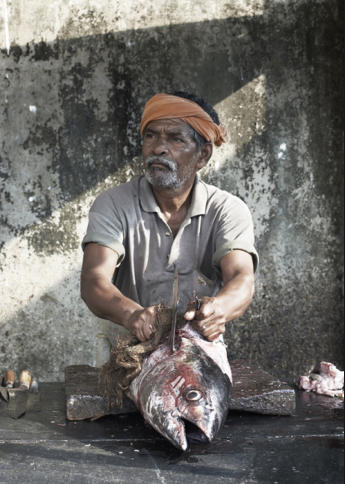
Arch Angel - A local tourist takes refuge from the midday
sun in arches of one of the many temples which
populate Hampi
Fishmonger - A Keralan fishmonger prepares the morning
catch for market. Line caught tuna such as this one are
becoming rarer as fishermen begin to employ more
industrious, and destructive, trawler fishing methods.
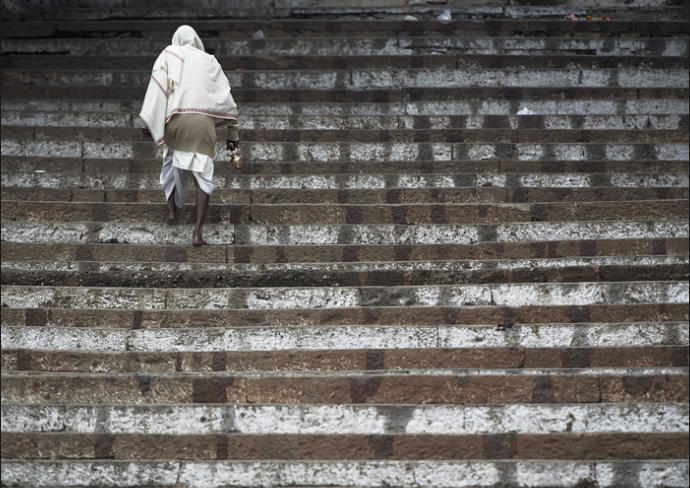
Ascent - A pilgrim ascends the Ghats after offering 'Puja', or prayers, in the Holy River Ganges, Varanasi. The city is
the oldest inhabited city in the world, and thousands of Hindus and Jainists flock to the town to perform religious
ceremony in the holy waters of the Ganges, receive blessings from the Brahmins, and to die and be incinerated on the
Ghats.
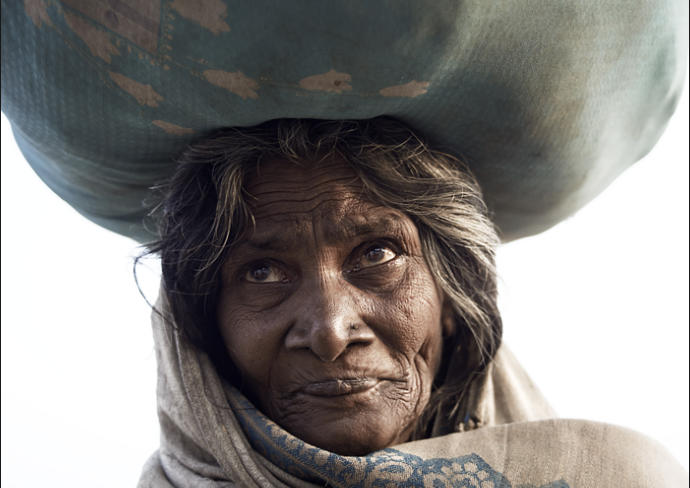
Beggars Belief - The increase in tourism has led to an increase in professional begging, which can be more lucrative
than many more traditional jobs. The influx of vast numbers to major cities has also led to severe poverty in those
areas, and begging is be the only source of income for many families.
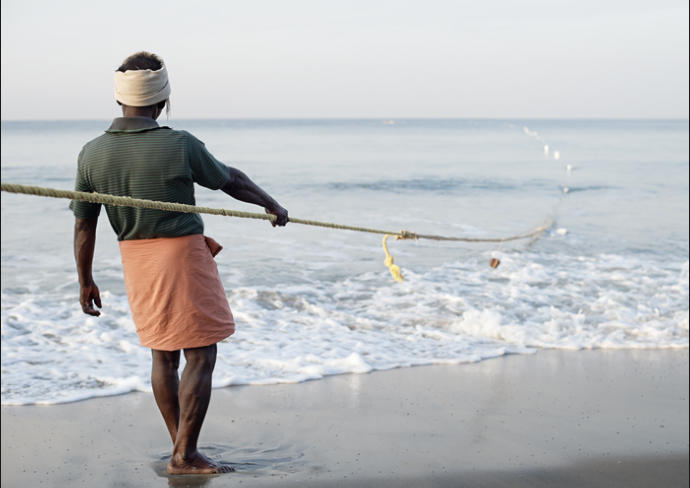
Double or Nothing - In Varkala I was intent on capturing local fishermen employing traditional shore net practices to
catch fish, where a net is trawled in a large arch a few hundred metres off shore, and two teams of men haul in the
nets to shore to catch the fish. After a few shots I was enlisted by the men to help pull in the nets, and after an hour of
heaving the nets revealed a catch of around 100 tiny fish. According to the fishermen stocks have decreased due to
overfishing as the population rises.
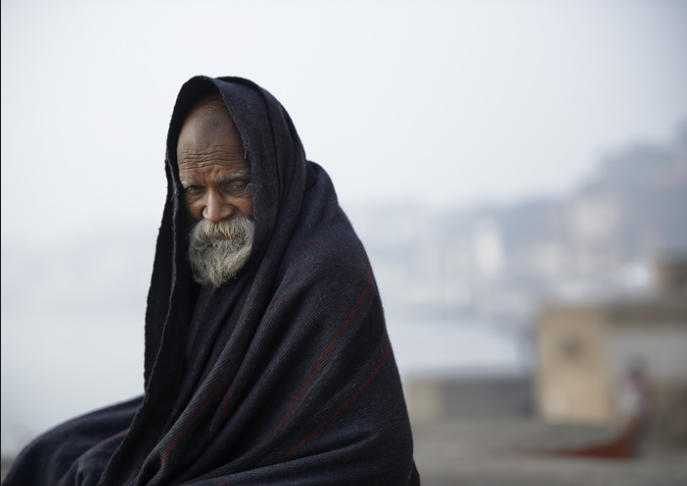
First Light on the Ghats.
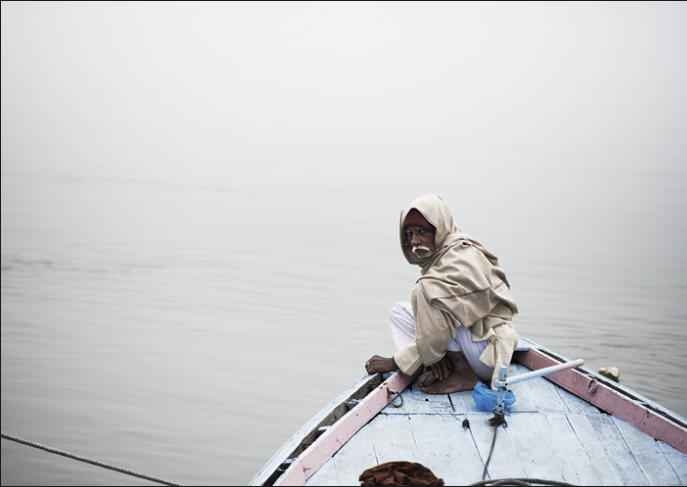
Fisherman's Tale - Fishing in the Ganges, which is full of human detritus, and slicks of spilled fuel from the many boats
travelling its length, yields little for this fisherman.
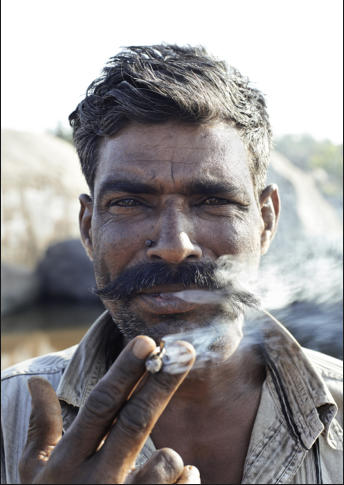
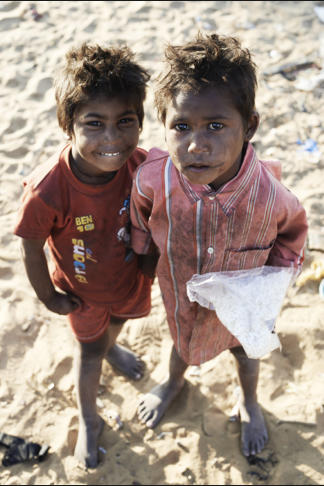
Guide - In Hampi, a local farmer supplements his meagre
income through guiding foreign tourists to a waterfall
located on his farm. This, and the sale of Marijuana to the
tourists, provides him with a greater income than the
production of crops
Children of the 'Gypsy Caste'. On the outskirts of
Pushkar I was invited to spend some time in the
settlement of one of the gypsy camps which fringes the
small town. Here I met Vijay Bhat, a 21 year old gypsy,
who runs a project whose aim is to get the young
children in his village into school though foreign
sponsorship. The caste, or class, system, which is still
extremely prevalent throughout the subcontinent, puts
Vijay's caste at the bottom, and means children such as
these rarely get the opportunity to attend school, and so
remain socially immobile.
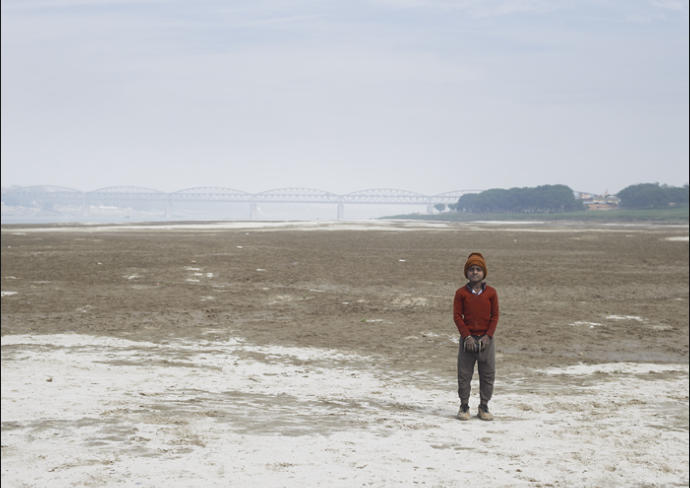
Kiteless - During 'Kichadi' Kite flying festival, a young boy loses his homemade kite as it tangles with the strings of
another.
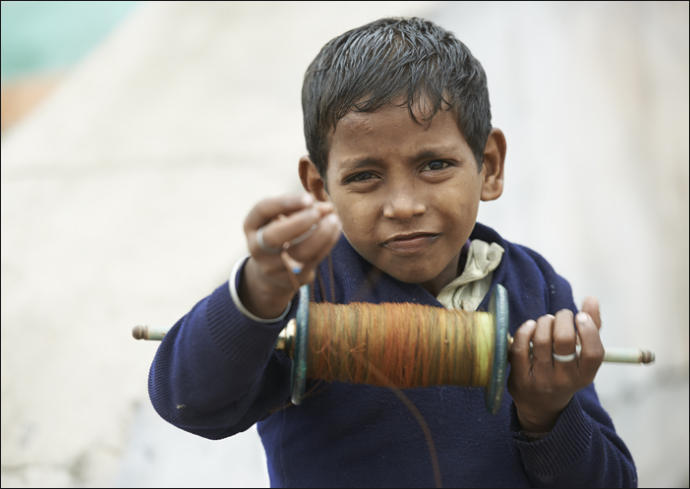
Kiterunner - Poverty and overpopulation are enormous issues throughout the subcontinent, and begging is therefore
prolific. This young boy stops fling his kite to ask for money and food.
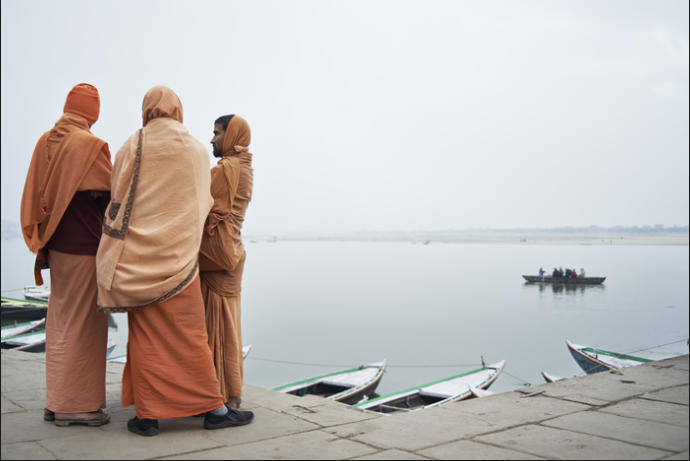
Monks at Dawn - As the birthplace of Hinduism, Buddhism, Jainism and Sikhism, religion in India is characteristically
diverse. Although religious tradition still runs string in many communities, the attraction of westernised and
commercialised culture is causing many young people in the country to turn their backs on the religious beliefs of their
parents.
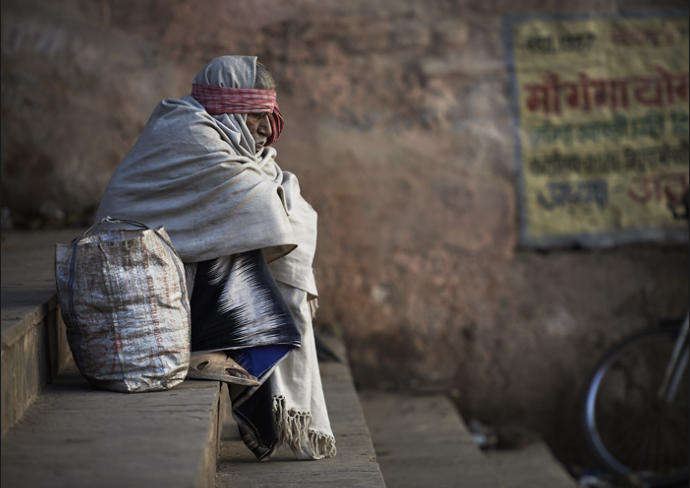
Morning Chill - A family member of one of the deceased who travel to Varanasi to die, and be burned on the holy Ghats,
fights to keep out the morning chill. Around 80 bodies are burnt each day on the Ghats, and entire families will travel
many hundreds of miles to accompany a dying relative to their final resting place.
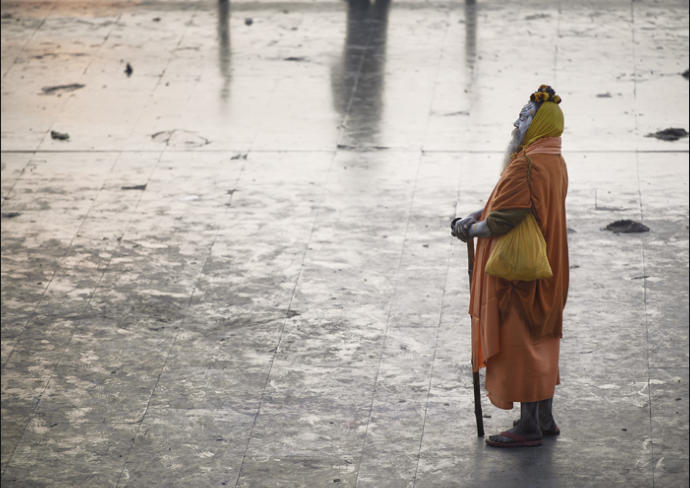
Patience - A 'Holy Man' patiently waits for unsuspecting tourists, who are unwillingly 'blessed', with a series of offerings
and flowers, in exchange for a 'donation', often forcibly requested. Many holy men, such as the Ascetic priests, and
Aghori Sadhus, travel vast distances on pilgrimages to various holy sites up and down the country, and rely mainly on
donations from other pilgrims and locals in return for blessings. Although, with tourism, the commercialisation of these
ancient religious rites is rife.
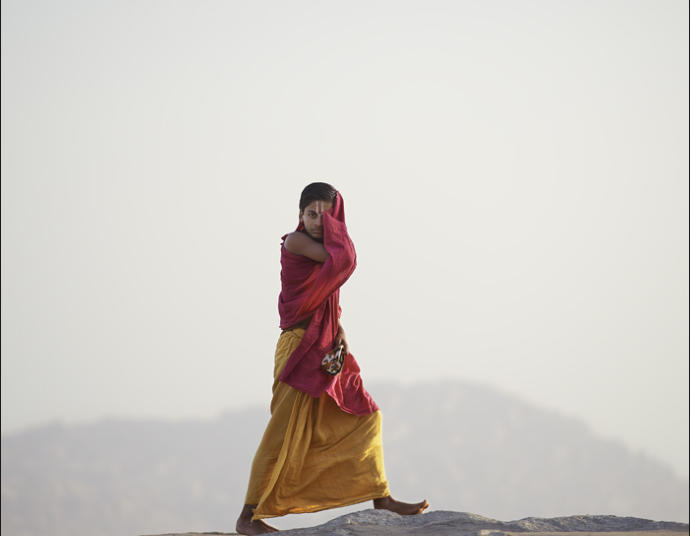
Rush to Temple - A Hindu temple boy rushes to the Money Temple atop Anjaneya Hill, Hampi, to attend the morning
Puja. The monks live in the secluded temple perched on the hill above Hampi for most of the year.
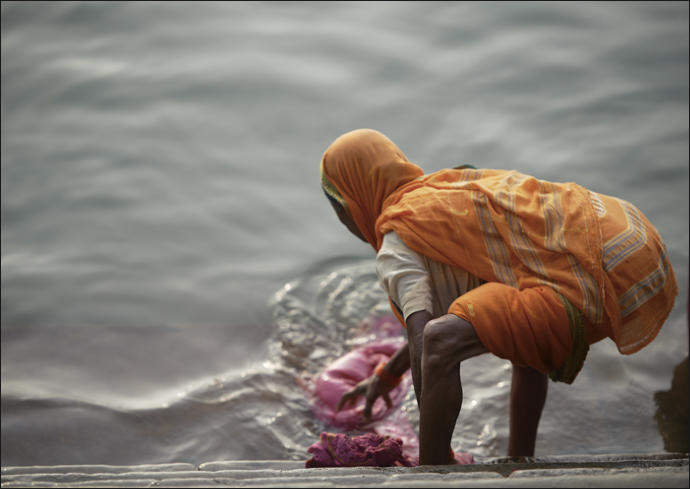
A Splash of Pink - An old woman washes her saris in the Ganges.
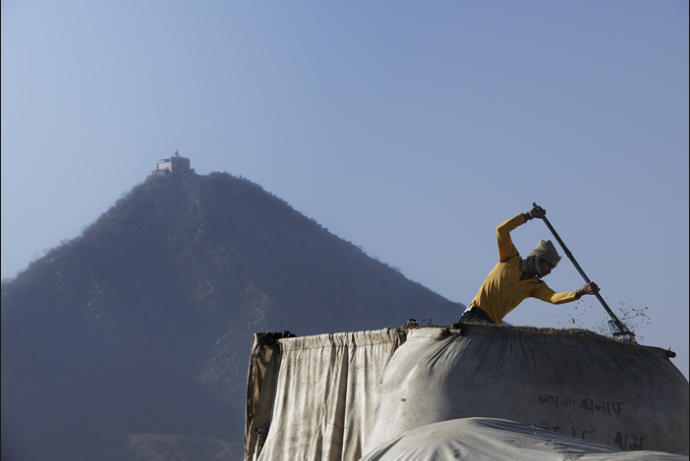

Pushkar. A farmer works in the midday heat in the shadow of a hilltop temple.
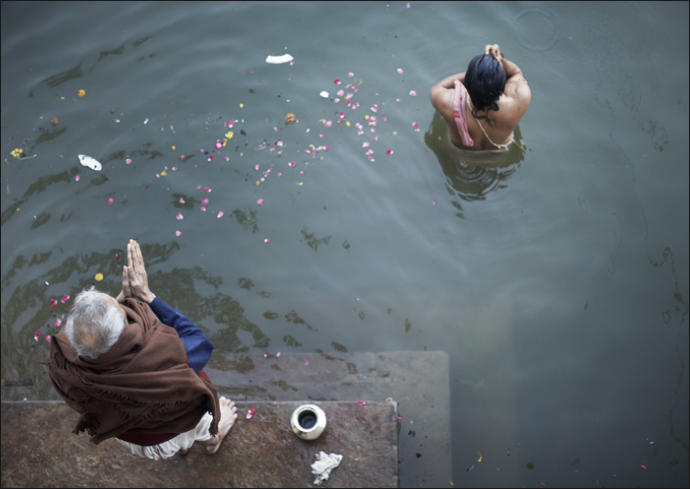

Washed Away - Pilgrims offer Puja in the holy water of the Ganges.










